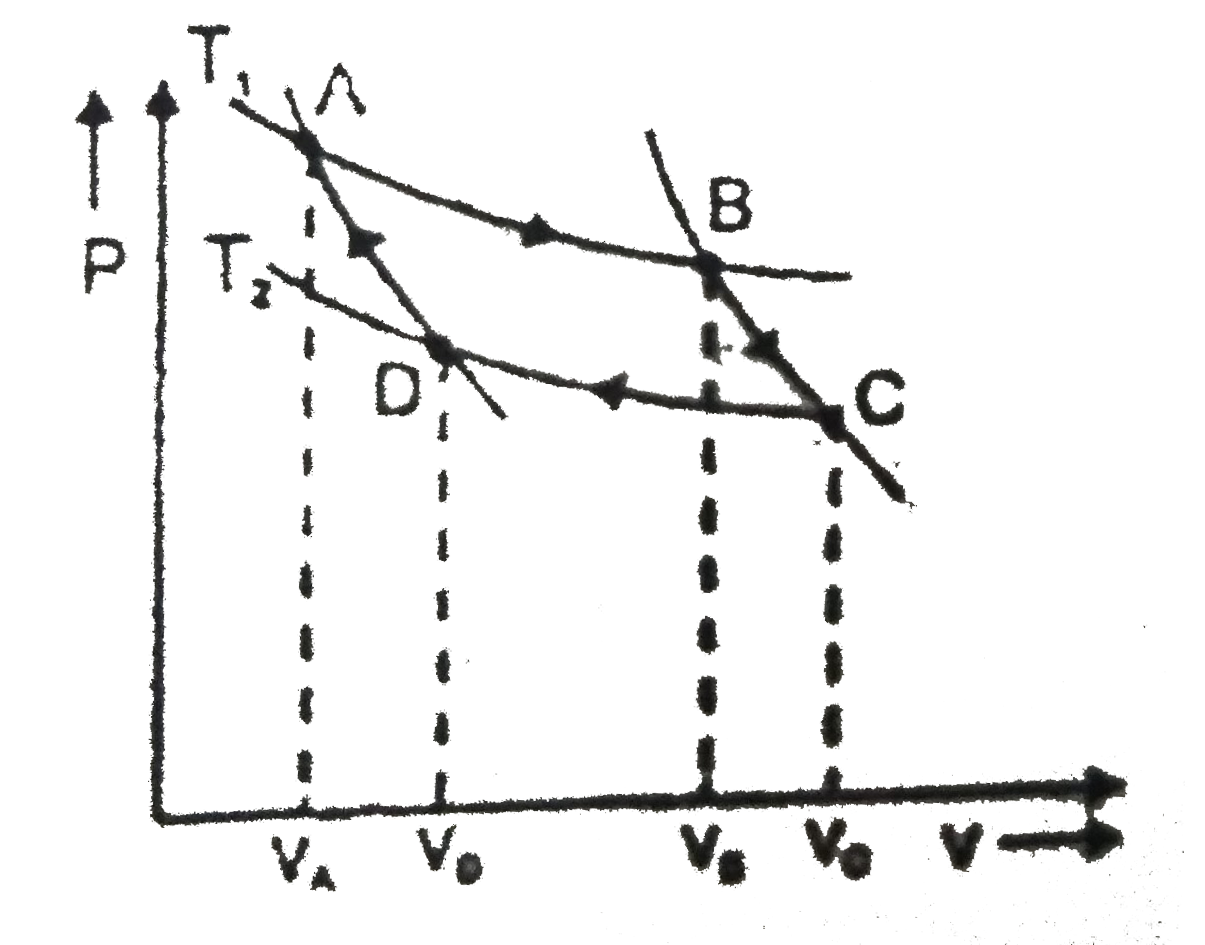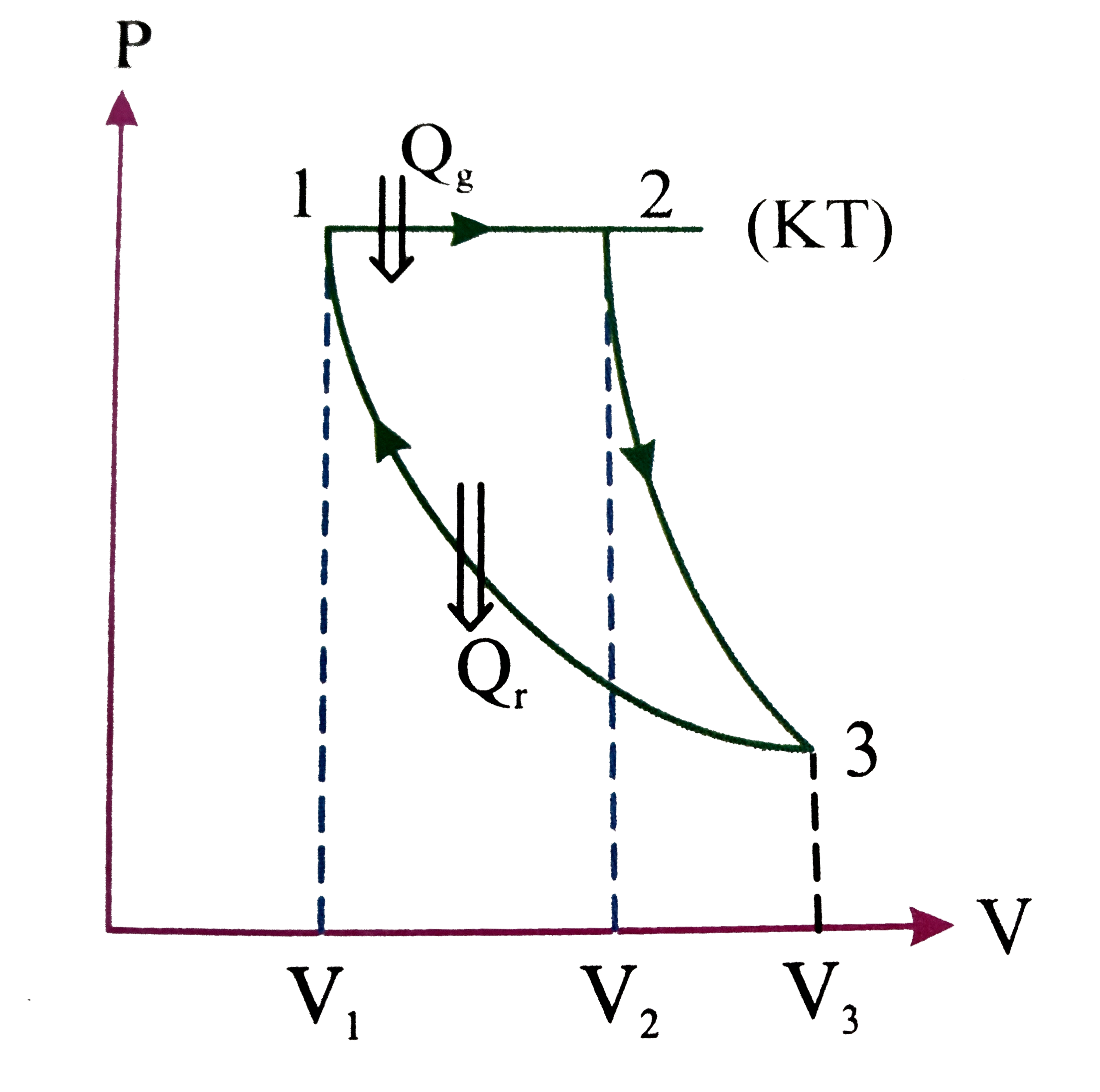Expalin the difference between :
Adiabatic and isothermal process
To explain the difference between adiabatic and isothermal processes, we can break it down into a structured format:
1. Definition of Processes:
- Isothermal Process: An isothermal process is one in which the temperature of the system remains constant throughout the process. This means that any heat added to the system is used to do work, and any work done on the system results in an equivalent amount of heat being released.
- Adiabatic Process: An adiabatic process is one in which no heat is exchanged between the system and its surroundings. In this process, any change in the internal energy of the system is due solely to work done on or by the system.
2. Heat Transfer:
- Isothermal Process: There is heat transfer in an isothermal process. Heat can be added to or removed from the system to maintain a constant temperature.
- Adiabatic Process: In an adiabatic process, there is no heat transfer (ΔQ = 0). The system is insulated from its surroundings, preventing any heat exchange.
3. Temperature Change:
- Isothermal Process: The temperature remains constant (ΔT = 0) throughout the process. This is a defining characteristic of an isothermal process.
- Adiabatic Process: The temperature changes during the process. The temperature can increase or decrease depending on whether work is done on the system or by the system.
4. Nature of the Process:
- Isothermal Process: The transformation is slow, allowing the system to exchange heat with its surroundings and maintain thermal equilibrium.
- Adiabatic Process: The transformation is rapid, and the system does not have time to exchange heat with its surroundings.
5. Work Done:
- Isothermal Process: The work done is accompanied by heat transfer, which keeps the temperature constant.
- Adiabatic Process: The work done results in a change in internal energy, leading to a change in temperature without any heat transfer.
Summary of Differences:
- Heat Transfer:
- Isothermal: Heat transfer occurs.
- Adiabatic: No heat transfer occurs.
- Temperature Change:
- Isothermal: Temperature remains constant.
- Adiabatic: Temperature changes.
- Nature of Process:
- Isothermal: Slow process.
- Adiabatic: Fast process.
- Work and Energy:
- Isothermal: Work done with heat exchange.
- Adiabatic: Work done without heat exchange.
- Isothermal Process: An isothermal process is one in which the temperature of the system remains constant throughout the process. This means that any heat added to the system is used to do work, and any work done on the system results in an equivalent amount of heat being released.
- Adiabatic Process: An adiabatic process is one in which no heat is exchanged between the system and its surroundings. In this process, any change in the internal energy of the system is due solely to work done on or by the system.
- Isothermal Process: There is heat transfer in an isothermal process. Heat can be added to or removed from the system to maintain a constant temperature.
- Adiabatic Process: In an adiabatic process, there is no heat transfer (ΔQ = 0). The system is insulated from its surroundings, preventing any heat exchange.
- Isothermal Process: The temperature remains constant (ΔT = 0) throughout the process. This is a defining characteristic of an isothermal process.
- Adiabatic Process: The temperature changes during the process. The temperature can increase or decrease depending on whether work is done on the system or by the system.
- Isothermal Process: The transformation is slow, allowing the system to exchange heat with its surroundings and maintain thermal equilibrium.
- Adiabatic Process: The transformation is rapid, and the system does not have time to exchange heat with its surroundings.
- Isothermal Process: The work done is accompanied by heat transfer, which keeps the temperature constant.
- Adiabatic Process: The work done results in a change in internal energy, leading to a change in temperature without any heat transfer.
- Heat Transfer:
- Isothermal: Heat transfer occurs.
- Adiabatic: No heat transfer occurs.
- Temperature Change:
- Isothermal: Temperature remains constant.
- Adiabatic: Temperature changes.
- Nature of Process:
- Isothermal: Slow process.
- Adiabatic: Fast process.
- Work and Energy:
- Isothermal: Work done with heat exchange.
- Adiabatic: Work done without heat exchange.
Topper's Solved these Questions
- THERMODYNAMICSBOOK - MODERN PUBLICATIONCHAPTER - THERMODYNAMICSEXERCISE - Revision Exercise (Long Answer Questions)
11 Videos
- THERMODYNAMICSBOOK - MODERN PUBLICATIONCHAPTER - THERMODYNAMICSEXERCISE - Revision Exercise (Numerical Problems)
10 Videos
- THERMODYNAMICSBOOK - MODERN PUBLICATIONCHAPTER - THERMODYNAMICSEXERCISE - Revision Exercise (Short Answer Questions ) (Fill in the blanks : )
5 Videos
- STRUCTURE OF ATOMBOOK - MODERN PUBLICATIONCHAPTER - STRUCTURE OF ATOMEXERCISE - Unit Practice Test
13 Videos
Similar Questions
Knowledge Check
Which of the following statements is true about the indicator diagram of adiabatic and isothermal processes?
AThe slope of isothermal is more than that of adiabaticBThe slope of adiabatic is more than that of isothermalCBoth are parallel straight linesDBoth are parallel curvesAn ideal gas undergoes a process consisting of adiabatic and isothermal process only as shown in the figure. Then :
 AT1<T2BVAVC=VBVDCwork done by the gas in process will be negativeDefficiency =WAB+WBCQAB
AT1<T2BVAVC=VBVDCwork done by the gas in process will be negativeDefficiency =WAB+WBCQABThe ratio of slopes of adiabatic and isothermal curves is
AγB1γCγ2Dγ3
Show that the slope of p−V diagram is greater for an adiabatic process as compared to an isothermal process.
View SolutionSTATEMENT-2: In a gas , any rapid change must be adiabatic, whereas a slow change may be adiabatic.
STATEMENT-2: In a p-V diagram, the magnitude of the slope is greater for an adiabatic process than for an isothermal process.
View SolutionA gas is expanded form volume V0→2V0 under three different processes as shown in the figure . Process 1 is isobaric process process 2 is isothermal and and process 3 is adiabatic .
Let ΔU1,ΔU2andΔU3 be the change in internal energy of the gs in these three processes then

View SolutionA cycle is made of three process is iso barie, adiabatic and isothermal. Isothermal process has minimum temperature. Absolute temperature charges by k times withing the cycle. Find out the efficiency.

View SolutionIn the given graph, adiabatic and isothermal curves are shown. Then,

View Solution
